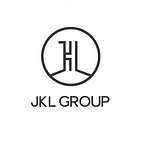Part One — Quantitative Trading System
· JKL Proprietary trading system utilizes over 100 statistical models;
· Fund’s strategies are aimed at predicting short-term price movements and capturing volatility;
· Since the launch in 2018 JKL trading system has realized a historic annualised return of around 50%, with maximum drawdown of -7%;
· Every statistical model has return targets and stop loss limits to ensure high level risk management;
INTRODUCTION
JKL Capital’s principal distinction on the market is the fund’s proprietary quantitative trading system which runs portfolio allocations and trade executions (see Figure 1). JKL trading strategies were developed based on 15+ years of R&D and quantitative trading expertise. Up to date, the proprietary quantitative trading system utilizes over one hundred statistical models that consistently optimize allocations between investment strategies on the one hand, and underlying assets on the other hand to maximize return whilst minimizing risk of the portfolio. Algorithmic execution system is integrated within the fund’s quantitative trading system and has access to multiple exchanges, ensuring liquidity and executing transactions with minimal price impact.
PROPRIETARY QUANTITATIVE TRADING SYSTEM
Quantitative trading system first went live in September 2018, and has been constantly improving since, using a variety of technical methods, including data science, machine learning and artificial intelligence. As opposed to investing in crypto currencies, fund’s strategies are aimed at predicting short-term price movements and capturing the attractive volatility of digital assets. Short-term price movement predictions encompass positions which are held anywhere between one hour to few days before giving way to new optimized allocations.
Strategies in action
Fund’s digital assets trading approach is based on two core sub-strategies: trend following and mean reversion. Capital allocation between these two sub-strategies is dynamic, and is continually rebalanced based on real-time data, which is synced to the system every 5 minutes from world’s top three exchanges (see Figure 2).
In general, trend following sub-strategy accounts for 80% of all trades and is diversified between Fast Trend Following (FTF) and Slow Trend Following (STF). While trend following generates high returns, it is also accountable for relatively higher drawdowns, which are partially neutralized by a more risk-averse Mean Reversion trading sub-strategy. Fund’s allocation to the Mean Reversion sub-strategy generally varies around 20%. Together, these two quantitative trading sub-strategies contribute to a historic annualized return of 50% (or 40–60% annual return) with a maximum drawdown of -7%.
In its daily digital asset trading activity, JKL Capital employs a 4-level risk management process, which includes:
· Model risk control;
· Sub-strategy risk control;
· Portfolio risk control;
· Execution risk control.
On each of these levels, the fund employs return targets and stop loss limits. Once a model, sub-strategy or portfolio reaches its target return, or hits the stop loss, investment position size recommended by the trading system is reduced. Execution risk control ensures that specific stop loss limits for individual positions are always enforced in real time, regardless of model signals.
Read More about our fund in JKL Insights: https://www.jkl.capital/copy-of-insights-1
